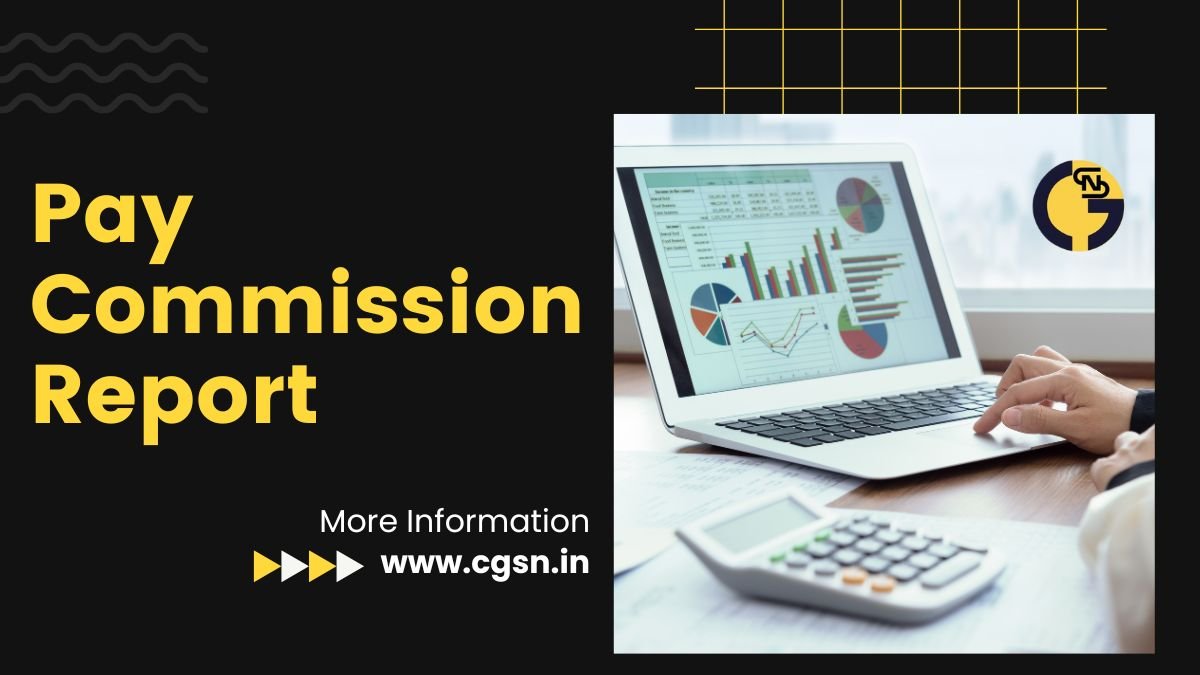1st, 2nd, 3rd, 4th, 5th, 6th, 7th and 8th Central Pay Commission Report PDF Download
All Pay Commission Report PDF Download: The Central Pay Commission is established by the Union Government to periodically review and adjust the salaries, pensions, and benefits of Central Government employees and retirees every decade. Access the comprehensive reports of each Central Pay Commission, along with accompanying PDF links, for your convenience and reference.
Table of Contents
8th Pay Commission Report PDF
The Central Government has yet to establish a committee dedicated to revising pay, pension, and allowances for Central government employees. However, there is anticipation among the workforce that a group of members will be appointed for the 8th Pay Commission shortly. The employees are eager for this development, as it will have a significant impact on their financial well-being and prospects.
7th Pay Commission Report PDF
On 25 September 2013, the then Finance Minister P Chidambaram made a public announcement that Prime Minister Manmohan Singh had given his approval for the establishment of the Seventh Central Pay Commission. Taking the helm as its head was Justice A.K Mathur, as officially declared on 4 February 2014.
After six months of rigorous evaluation and extensive deliberation, on 29 June 2016, the Government finally accepted the recommendations put forth in the 7th Pay Commission Report, resulting in a modest 14% increase in salaries for the employees. Noteworthy in this implementation was the innovative creation of the Pay Matrix Table, designed with unique features to streamline the salary structure across different levels and categories. [Click To Download 7th CPC Report PDF]
6th Pay Commission Report PDF
The 6th Central Pay Commission was set up in 2006 under Justice B.N. Srikrishna to address the issue of low salaries for government employees. The commission aimed to provide salary hikes for 5.5 million government workers, with anticipated costs of around ₹20,000 crore. The report was expected in 2008, and pay arrears were eventually paid out in two installments in 2008 and 2009. The commission focused on simplifying pay scales and introducing pay bands, aiming to address issues like underpayment of Class 1 officers and the removal of the Group-D cadre. [Click To Download 6th CPC Report PDF]
5th Pay Commission Report PDF
The Fifth Central Pay Commission was set up in April 1994 with Justice S. Ratnavel Pandian as the chairman and two other members. The commission took three years to prepare a detailed report with 172 chapters, covering various aspects of pay scales, allowances, pensions, and retirement benefits. Part VI focused on civilian pensions, Part VII on Armed Forces personnel pay scales and allowances, and Part IX concluded the report. [Click To Download 6th CPC Report PDF]
4th Pay Commission Report PDF
The Fourth Central Pay Commission was constituted in 1983 and its report was given in three phases within four years, costing the government ₹1282 crore. It was chaired by P N Singhal. The implementation of the ‘Rank Pay’ concept for armed forces officers by the Indian National Congress (I) Government under Rajiv Gandhi affected officers from second lieutenant to brigadier by deducting amounts from their pay grade. This decision was criticized by experts as a fraud and injustice to the defense forces.
3rd Pay Commission Report PDF
The Third Central Pay Commission, established in April 1970 and reporting in March 1973, made minor adjustments to the civilian pension formula. The most notable change was increasing qualifying service for pension from 30 to 33 years, with a maximum pension of 41.25% for 33 years of service. The commission also set up a formula for Dearness Allowance. Additionally, it was the first commission to address the emoluments of both civilian government employees and the Armed Forces.
2nd Pay Commission Report PDF
The 2nd Central Pay Commission was set up in 1957, chaired by Jagannath Das, with recommendations impacting ₹39.6 crore. The Raghuramiah Committee followed, examining armed forces emoluments. The commission revised pay scales, merging 50% of Dearness Allowance with basic pay, recommending a minimum salary of Rs. 80 and a maximum of Rs. 3000 for government employees.
1st Pay Commission Report PDF
The first pay commission was established in January 1946 under the chairmanship of Srinivasa Varadacharia to provide “living wages” to employees. Its recommendations were accepted and implemented in 1947. The minimum basic pay for Class IV staff was raised from Rs. 10 to Rs. 30 and for Class III from Rs. 35 to Rs. 60 per month. The post-war pay committee for the armed forces was tasked with determining the emoluments structure for service members. The New Pay Code effective from July 1947 was based on the recommendations of this committee.
Top Suggested Posts:
- All India School Admission List 2025-26
- Central Government Pay Scale Table for 4th, 5th, 6th, 7th, and 8th CPC
- Central Govt Holiday Home Updated List 2024
- CSD AFD Login Registration New Process 2024 @afd.csdindia.gov.in
- DA Calculation Table Rates 2016-2025
- Expected DA Calculator for January 2025
- Formation of 8th Pay Commission Date, Basic Pay Structure, Fitment Factor
- New Pay Matrix Table for Government Employees in 2026!
- Pay Matrix Table for Central Government Staff After 2025?
- Privacy Policy
